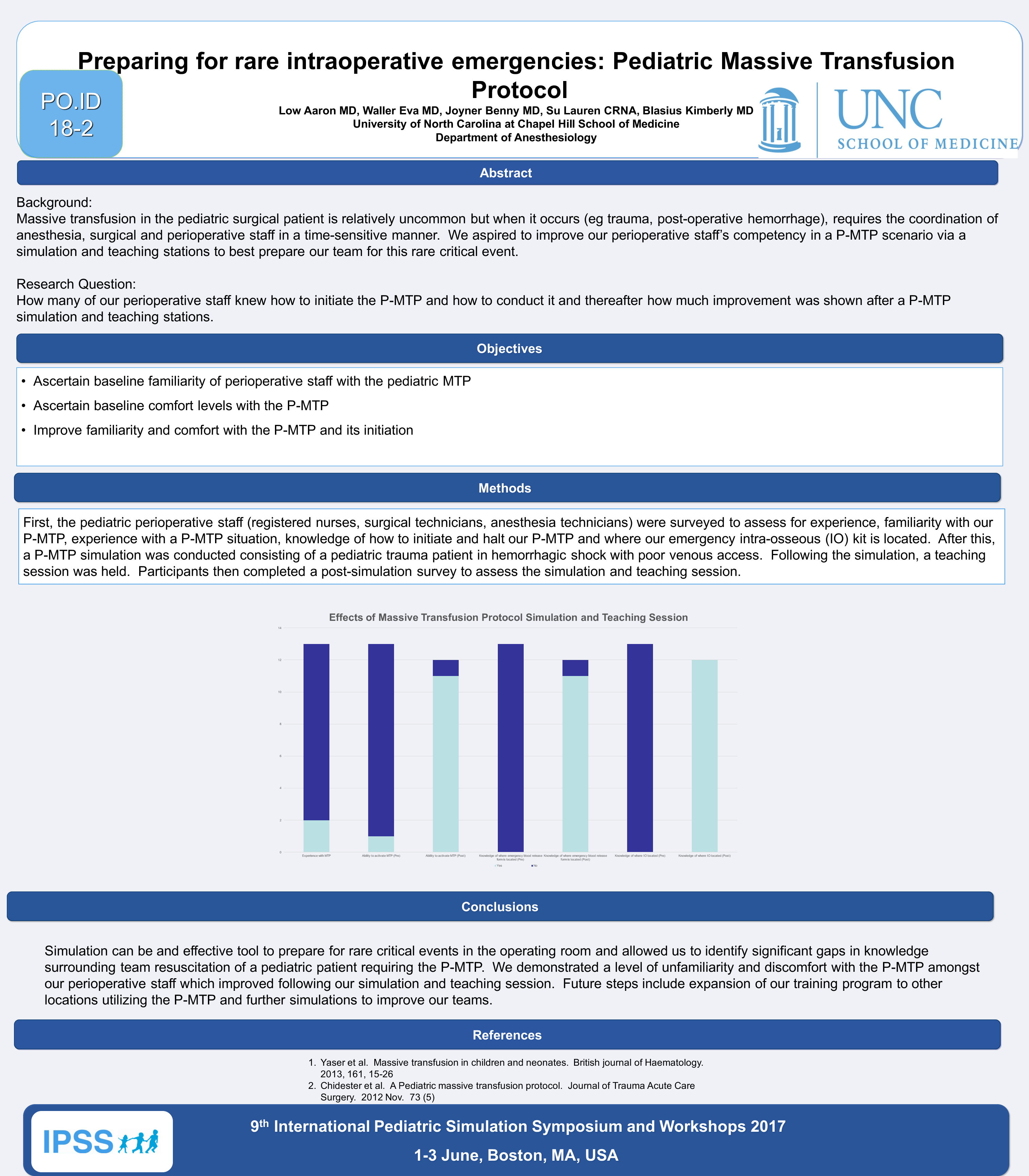Abstract
Background:
Massive transfusion in the pediatric surgical patient is relatively uncommon but when it occurs (eg trauma, post-operative hemorrhage), requires the coordination of anesthesia, surgical and perioperative staff in a time-sensitive manner. We aspired to improve our perioperative staff’s competency in a P-MTP scenario via a simulation and teaching stations to best prepare our team for this rare critical event.
Research Question:
How many of our perioperative staff knew how to initiate the P-MTP and how to conduct it and thereafter how much improvement was shown after a P-MTP simulation and teaching stations.
Methods:
First, the pediatric perioperative staff (registered nurses, surgical technicians, anesthesia technicians) were surveyed to assess for experience, familiarity with our P-MTP, experience with a P-MTP situation, knowledge of how to initiate and halt our P-MTP and where our emergency intra-osseous (IO) kit is located. After this, a P-MTP simulation was conducted consisting of a pediatric trauma patient in hemorrhagic shock with poor venous access. Following the simulation, a teaching session was held. Participants then completed a post-simulation survey to assess the simulation and teaching session.
Results:
Pre and post surveys data. 13 staff completed the pre-survey and 12 completed the post-survey. Pre survey data: Staff experience (reported as total number): 0-3 years (4), 4-6 years (4), 6+ years (5). Familiarity with P-MTP: 23%. Prior experience with the P-MTP: (15%). Baseline comfort in assisting with a patient undergoing P-MTP: uncomfortable (54%), somewhat comfortable (38%), very comfortable (7%). Knew how to activate the P-MTP: (8%). Knew where the IO was located: (0%). Selected post survey data: Knew how to activate the P-MTP: (100%). Knew where the IO was located: (92%). Comfort in assisting with a patient undergoing the P-MTP: very comfortable (88%), uncomfortable (12%).
Discussion:
Simulation can be and effective tool to prepare for rare critical events in the operating room and allowed us to identify significant gaps in knowledge surrounding team resuscitation of a pediatric patient requiring the P-MTP. We demonstrated a level of unfamiliarity and discomfort with the P-MTP amongst our perioperative staff which improved following our simulation and teaching session. Future steps include expansion of our training program to other locations utilizing the P-MTP and further simulations to improve our teams.






